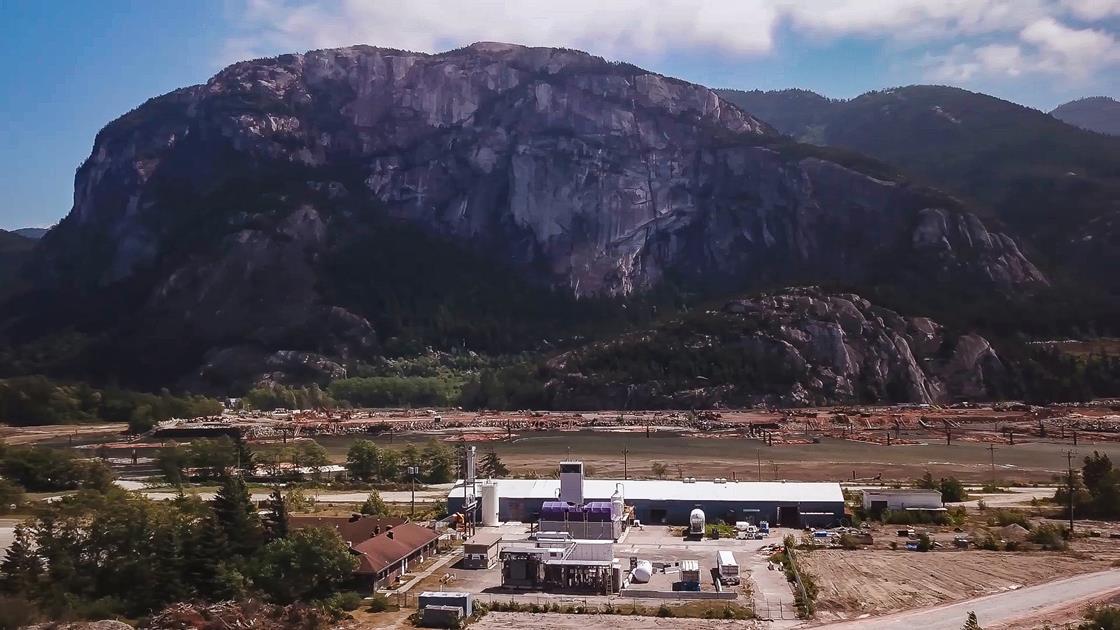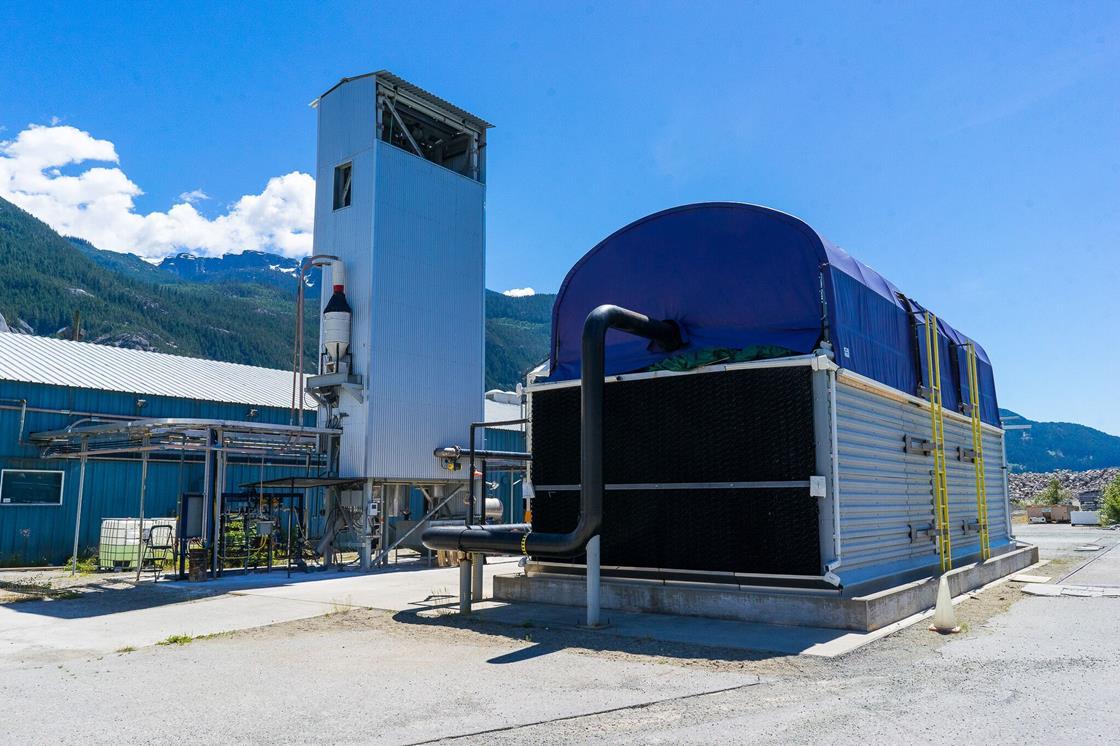

The companies are evaluating a facility designed to capture 500,000 metric tonnes per year of carbon dioxide (CO2) direct from the atmosphere. The CO2 would then be used in Occidental’s enhanced oil recovery (EOR) operations and subsequently stored underground permanently.
OLCV is a subsidiary of Houston-based Occidental, an international oil and gas exploration and production company which has active investment in CO2 enhanced oil recovery and carbon capture, utilisation and storage (CCUS), as well as other emissions reducing technologies.
Oxy and Carbon Engineering are calling it “the world’s largest direct air capture and sequestration facility”.
The project hopes to prove Carbon Engineering’s DAC technology can be rolled out at large industrial scale, making it ready for widespread adoption and helping to tackle the challenge of CO2 already in the atmosphere.
Carbon Engineering’s working pilot plant in Squamish, British Columbia
Pairing DAC with CO2 sequestration in EOR operations is also a significant step forward for the energy industry, as it provides a mechanism designed to greatly reduce or fully eliminate the net addition of CO2 to the atmosphere from oil production and use.
The project is expected to expand to include multiple DAC plants, each capturing 1 megatonne of atmospheric CO2 per year.
If the initial plant is approved by Occidental and Carbon Engineering, construction is expected to begin in 2021, with the plant becoming operational within approximately two years.
“We are excited to partner with Carbon Engineering on the first Direct Air Capture facility in the Permian Basin, enabling us to enhance our leadership position in CO2 EOR,” said OLCV President Richard Jackson.
“Using atmospheric CO2 for oil recovery greatly reduces the net addition of CO2 to the atmosphere from oil production and fuel use, and opens a pathway to producing fully carbon-neutral or even net-negative fuels.”
Canada-based Carbon Engineering has developed a direct air capture pilot plant in Squamish, British Columbia, and has been removing CO2 from the atmosphere since 2015 and converting it into fuels since 2017.
Steve Oldham, CEO of Carbon Engineering, said, “Climate experts tell us that, alongside other mitigation solutions, carbon removal technologies like DAC are going to be essential if we hope to decarbonize in time to avoid the worst impacts of climate. These carbon removal technologies need to be deployed widely and at large enough scales to be climate-relevant. This project the largest DAC-sequestration plant in the world is therefore a huge step forward in demonstrating the readiness of large-scale atmospheric carbon removal, and in accelerating efforts to bring global emissions down to net-zero, and eventually to net negative.”
Carbon Engineering is funded by investment or commitments from private investors and government agencies, with investors including Bill Gates, Murray Edwards, Oxy Low Carbon Ventures, LLC, Chevron Technology Ventures, and BHP.
